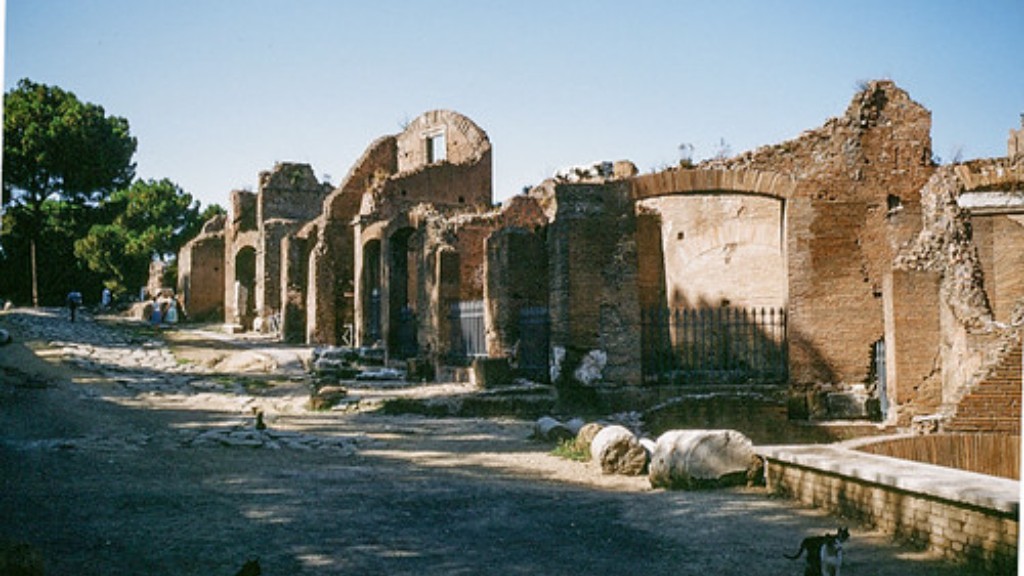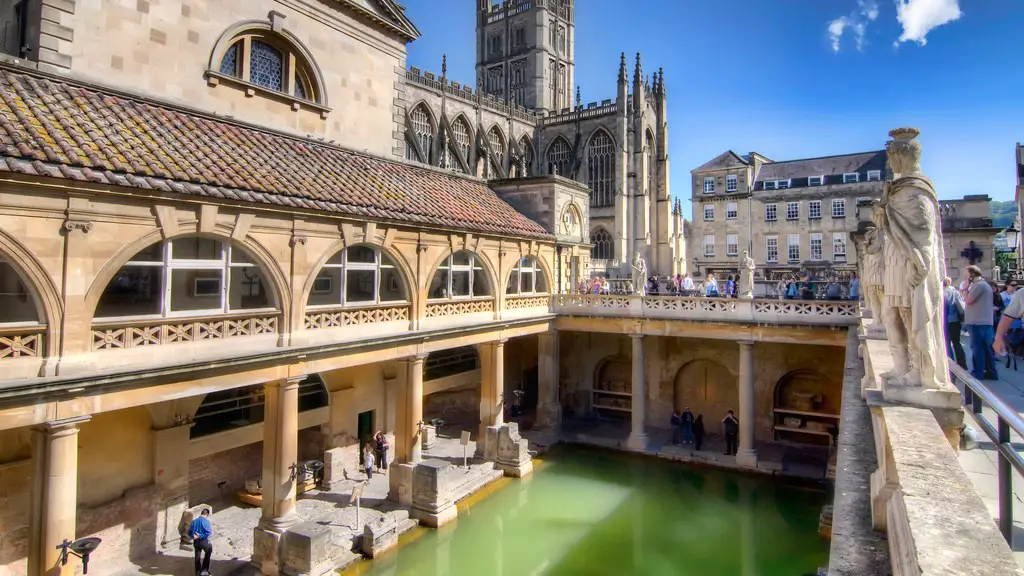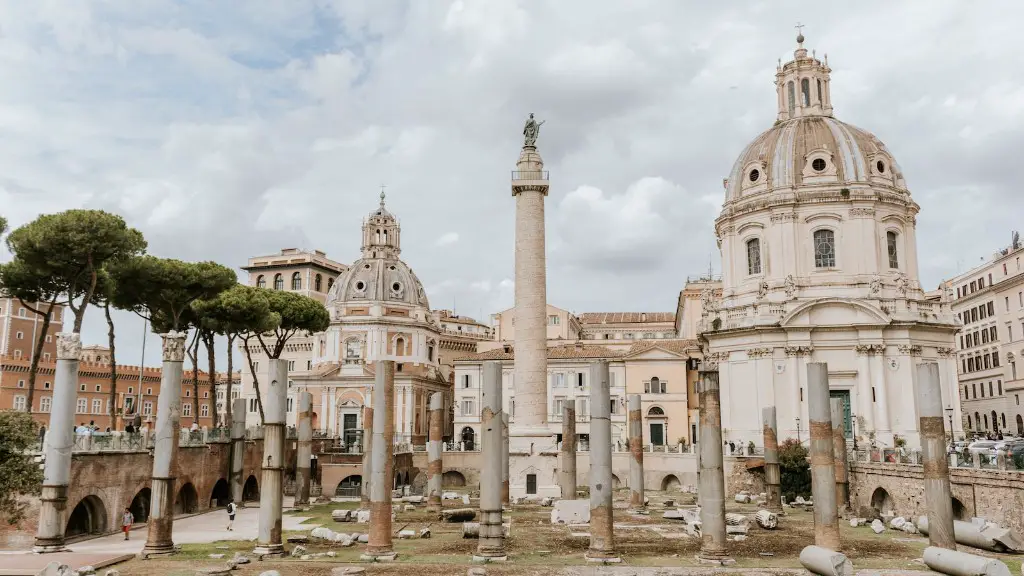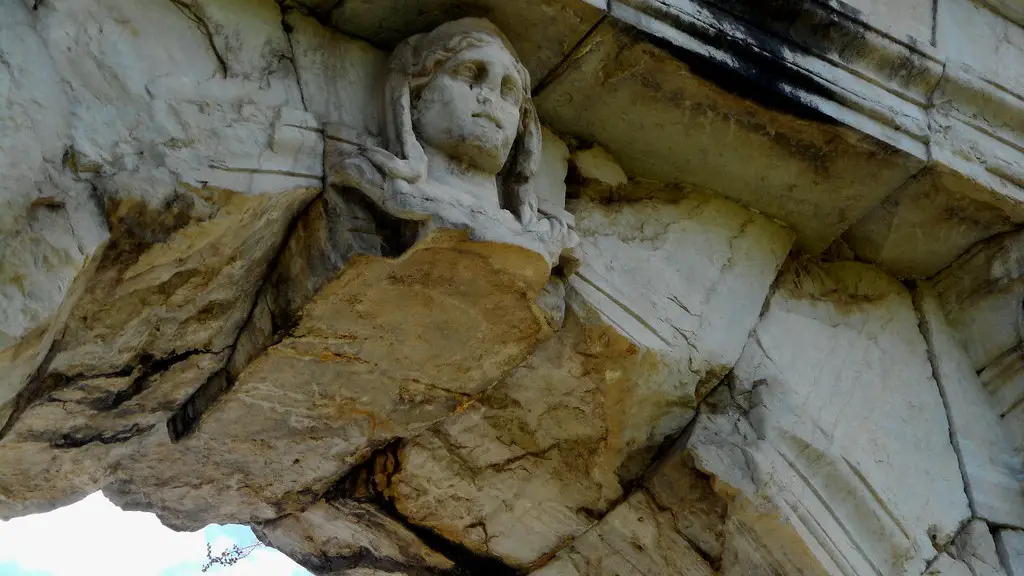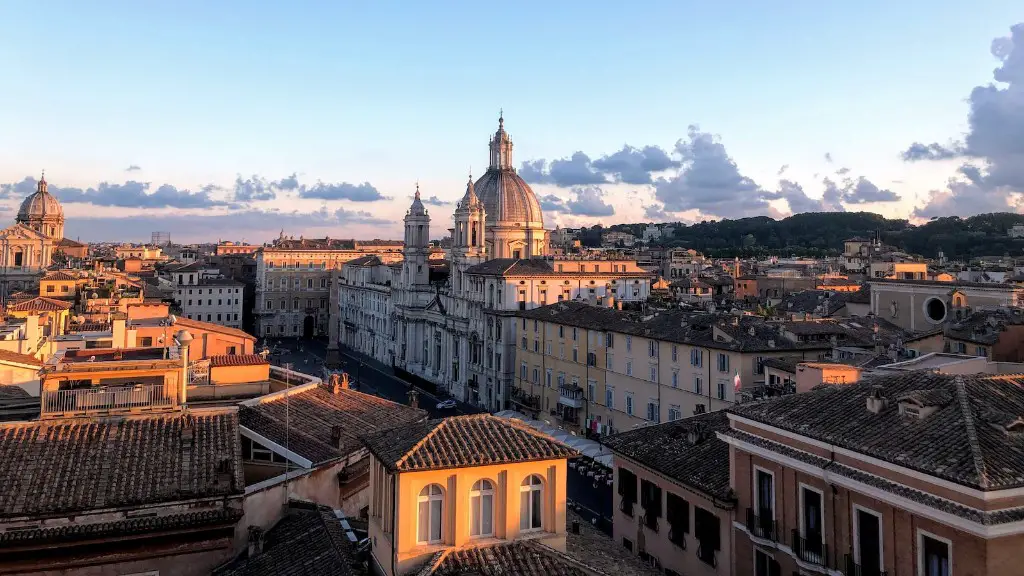When was architecture created in Ancient Rome? Architecture as we know it today has roots as far back as Ancient Rome. As the Roman Empire expanded, so did its influence on the development of property, urban design, and profound architectural designs. This article will explore the history of ancient Roman architecture and how it still affects our lives today.
The earliest known examples of ancient Roman architecture was the Latin-style stone temples created around the sixth century BC. The style of these buildings was very distinct in the way its massive columns and walls highlighted the building’s grandeur. Some of these temples were even dedicated to gods and goddesses such as Jupiter and Neptune. This type of architecture was given its distinct form thanks to the invention of the arch and the vault. The arch acted as a structural support to enable the construction of long, sweeping, and high structures.
The full development of the classical Roman architecture style appeared in the third century BC, with orders of columns and styles of arch used in edifices to give them flourish and grandeur. These orders were the Doric, Ionic, and Corinthian which the description columns, capitals, and other classical elements.
The Roman Empire was an empire of grand performances. With such, it developed architectural features such as the amphitheater and the Colosseum. Inspired by the behavior of the Greeks and Etruscans, these spectacular open-air performance venues were large enough to host hundreds to thousands of people. The layout of the Colosseum was a marvel of engineering and a source of entertainment for all families. It was made of concrete and stone, and it had multiple floor levels comprised of four main sections.
As the Roman Empire expanded, so did its architectural advancements. The Romans developed many structures, such as the baths, forums, and circus, which were all public places. This grand architecture was also found in the elaborate private homes and villas that were built. These were large, two or three-story domiciles filled with outdoor gardens, peristyle courtyard, and ornamental pools.
The legacy of ancient Roman architecture is still around today. The arch, which was a key architectural feature of the era, is still used, and many of its iconic buildings still exist, such as the Colosseum, Pantheon, the Roman Forum, and the baths. The influence of the classic orders of architecture is still evident in modern architecture such as in cathedrals and offices. Not to leave out its political implications, ancient Rome’s urban planning style is still followed in modern cities worldwide.
Governing Laws of Architecture in Ancient Rome
Although rarely expressed in writing, The governing laws of architecture during ancient Rome were practiced by the architects, who worked in the three key styles of architecture – Doric, Ionic, and Corinthian.
The Doric style was based on a heavier look, with tapered columns and a few relief designs. The Ionic style was adorned with ornamental adornment and curvaceous and floral design elements, while the Corinthian style had intricate, floral reliefs as its main feature.
Materials were chosen well to match the style and the purpose of the building. For the majority of buildings of Ancient Rome, brick, concrete, and stone were the primary materials. These structures were built with strong foundations to ensure the longevity of the structures.
Finally, to complete the intricate designs of the Roman buildings, many decorative touches, such as friezes, frescoes, and statuary, were added. It was also commonplace for the most elaborate buildings to have niches built into them for anchoring sculptures and other works of art.
The discovery of concrete played a major role in the Roman’s ability to construct the enormous structures that defined their cities. Concrete was used for walls, pavements, roofs, and the foundations of their buildings.
Technological Contributions of Roman Architecture
Roman Architecture made several contributions to the technological advancement that enabled its elaborate buildings to be created, preserved and still existing until current day. One of the most prominent contributions were the invention of the arch, barrel-vaults and groin-vaults, which revolutionized the construction of buildings and allowed them to be higher and much more complex.
The use of concrete as a building material was invented by the Romans and revolutionized the way structures could be built. Concrete was used for walls, pavements, roofs and the foundations of their buildings. Techniques used to shape and alter the concrete to fit the aesthetic and structural needs was also mastered.
The use of awnings was widespread in ancient Rome, and they were the earliest form of shade structures. Awnings were made of wood, canvas, or tapestry fabrics, and they were used in public places and in private villas. Needless to say, the use of awnings has been crucial in sustaining through the blazing hot summers in the Mediterranean.
Finally, the construction of dome roofs was also very advanced in ancient Rome. These were mainly used in public buildings, such as the Pantheon and had a diameter of 43.3 metres. The large, dome-shaped building had an inner sanctuary that was covered with a coffered ceiling.
Advancing Roman Architecture in the Modern Era
Today, modern architecture borrows a lot of elements from Ancient Rome. Many buildings have columns on the façade, use domes and curved walls, octagonal rooms, adornments such as reliefs, statues, and mosaic to decorate the buildings. We also see the use of arches and vaulted ceilings in modern buildings.
The scale and grandeur of Roman architecture is certainly still seen in many of the monuments built through the centuries, such as the Pantheon, the Colosseum, and Trajan’s Column. But the influence runs far deeper, with the classical orders of architecture providing the basis for modern structures, such as the United States Capitol building. Additionally, we still see the same elements in both residential and public buildings, such as archways, columns, or porticos.
Modern-day cities are not just copies of Roman designs. However, we can still acknowledge the way that the infrastructure and urban planning of Rome, which includes its monuments and public facilities, have heavily influenced and improved the urban planning of today, with modern cities inspired by it.
The Impact of Roman Architecture on Society
The grandeur of Ancient Roman architecture has had a considerable impact on the development of modern society. From its urban planning to its temples, monuments, baths, and theaters, Rome’s influence is still seen today.
The Romans were master builders and their architecture was an expression of power, grandeur and history. Their buildings have survived for centuries and are benchmarks of grace and elegance. They were the first civilization to make public buildings a part of their culture, which set the stage for later cities to follow in their footsteps.
What is truly impressive is how their buildings are not just standing, but are still in use. The Colosseum, for example, is now a tourist hot spot and a frequent setting for events such as concerts and theatrical performances. It is a reminder of how influential a society’s architecture can be, both to its own citizens and to future generations.
Ancient Roman architecture was also a strong source of inspiration for other civilizations and cultures, and the influence can be seen in everything from churches to palaces. Its monuments, buildings, and sculptures have become popular symbols of culture, history, and beauty around the world.
Conclusion
In conclusion, Ancient Roman architecture has proved to be one of the most iconic and influential forms of architecture of all time. Its monumental structures have inspired generations of architects and are admired and studied to this day. From its urban planning to its temples, monuments and villas, it is a reminder of the ingenuity and grandeur of the Roman Empire, a testament to its considerable contribution to the architecture of the modern world.
